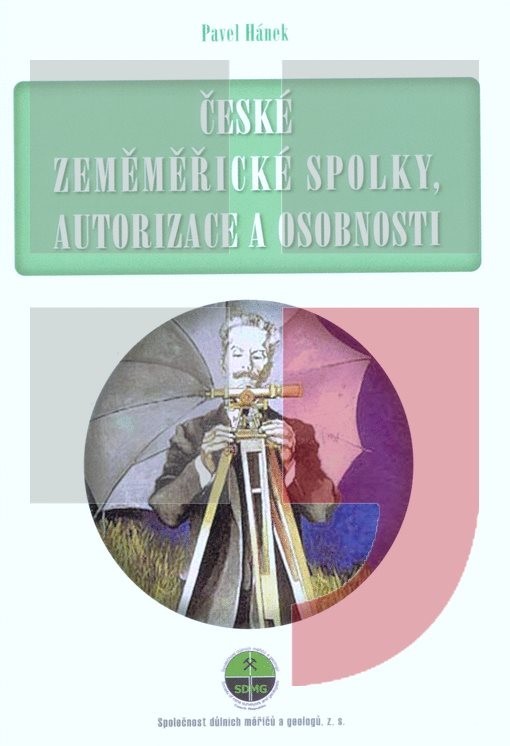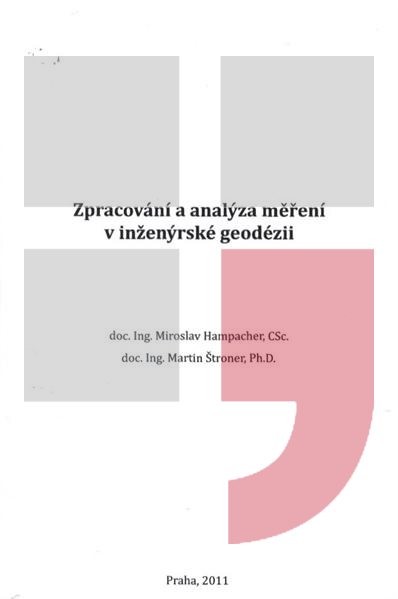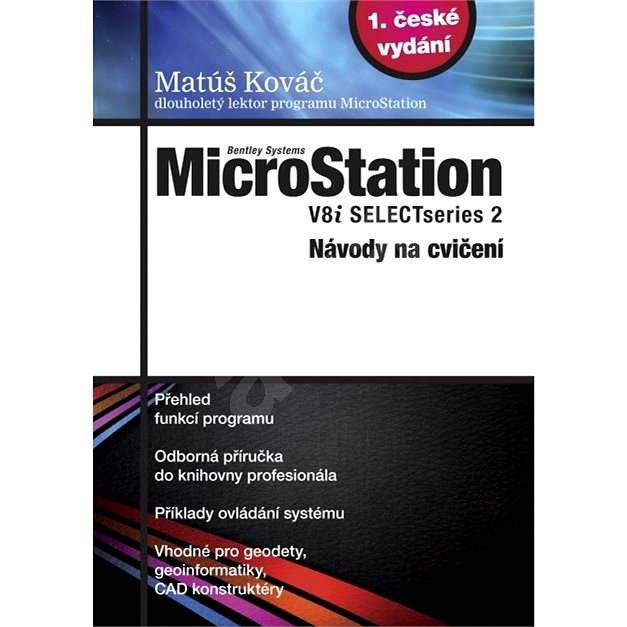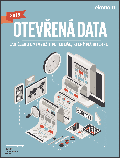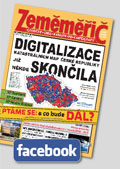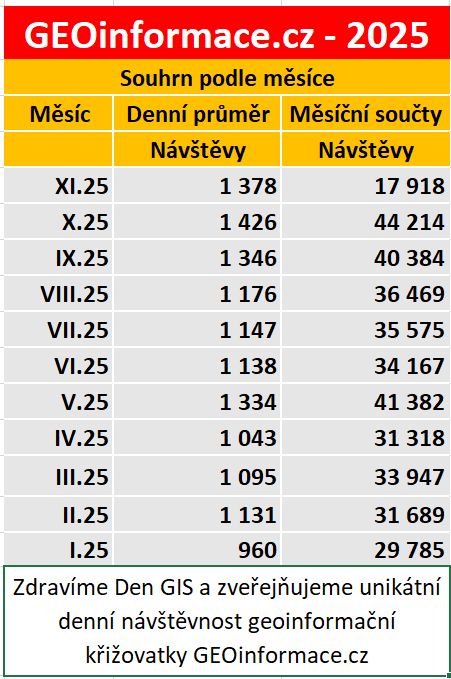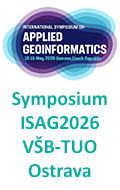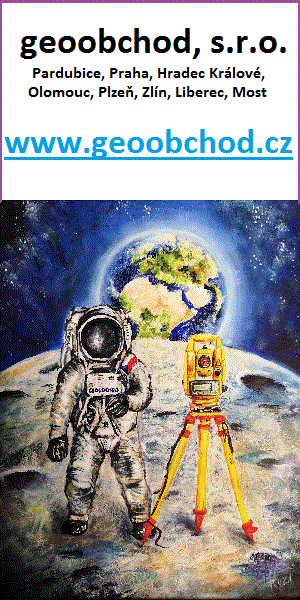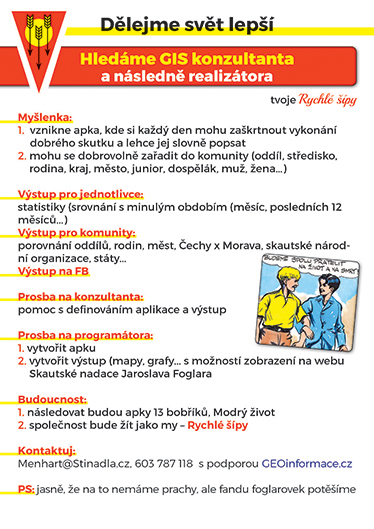zprávy
zdroje zpráv:Úpravy aplikace Geoprohlížec
29.9.2021 9:03 ČÚZK - Geoportál Úpravy aplikace GeoprohlížecByly provedeny úpravy funkcí aplikace Geoprohlížec:
- Na mobilních zarízeních nebude mít aplikace nadále omezené funkce.
- Pridána podpora pro WFS služby ve verzi 2.0 (musí podporovat výstup ve formátu GeoJSON).
- Po prechodu na souradnice, výpisu souradnic nebo vyhledání adresy ci Geonames je nove dostupná možnost Sdílet místo, která otevre zacílené okno pro vložení do webových stránek nebo k prostému otevrení.
- Prechod na souradnice je nyní umožnen také hromadne z textového souboru pro seznam souradnic v S-JTSK.
Introducing Global Mapper Pro - the all-in-one GIS software - Interview with Katrina Schweikert, Product Manager, Blue Marble Geographics
29.9.2021 9:00 GISCafe.com Webcasts-WebinarsSAIDEL Engineering designs first residential building above subway tunnels in west Bucharest
28.9.2021 22:14 Bentley SystemsPressCoverage
Indian Infrastructure, India
Read the articleTelstra consortium to build digital twin to protect infrastructure during Australian wildfires
28.9.2021 22:04 Bentley SystemsPressCoverage
Daca Centre Dynamics, UK&I
Read the articleTelstra led consortium to build out NSWs digital twin
28.9.2021 21:52 Bentley SystemsPressCoverage
iTnews, Australia/New Zealand
Read the articleDTK Hydronet Designs Smart Water Network for 24x7 Potable Water in India
28.9.2021 21:38 Bentley SystemsPressCoverage
Construction Times, India
Read the articleFabsec and Bentley Systems form design software partnership
28.9.2021 21:19 Bentley SystemsPressCoverage
New Steel Construction, UK&I
Read the articleBuilding Back Better Technology is the Answer Part 2
28.9.2021 21:12 Bentley SystemsPressCoverage
Cadalyst, USA
Read the articleWhats the future of remote workflows
28.9.2021 21:06 Bentley SystemsPressCoverage
GeoWeek News, USA
Read the articleDrones as an Automation Tool
28.9.2021 21:01 Bentley SystemsPressCoverage
Automaton World, USA
Read the articleWhy data is the key to better decisions
28.9.2021 20:47 Bentley SystemsPressCoverage
Raconteur & The Sunday Times, UK&I
Read the articleU.S. Government Awards Citadel Defense Multiple Contracts for New Drone and Pilot Location Solution
28.9.2021 20:23 GISCafe.com Webcasts-Webinars Citadel’s new offering detects, locates, tracks, and safely neutralizes unwanted dronesSAN DIEGO — (BUSINESS WIRE) — September 28, …
AerialSphere Joins the Esri Partner Network to Enhance and Expand GIS Capabilities and Delivery of 360-Degree Imagery
28.9.2021 20:23 GISCafe.com Webcasts-Webinars AerialSphere's technology alignment with Esri will provide customers with the ability to manage, visualize, exploit, and analyze a national dataset …Continental Mapping Consultants Awarded $49M NOAA Contract for Coastal Geospatial Services
28.9.2021 20:23 GISCafe.com Webcasts-Webinars Contract streamlines process for acquiring geospatial services and data related to coastal areas.SUN PRAIRIE, Wis., Sept. 28, 2021 — …
NGA Accelerator Announces Participant Startups for Second Cohort
28.9.2021 20:23 GISCafe.com Webcasts-Webinars The NGA Accelerator Powered by Capital Innovators recently selected eight companies from more than 208 applicants to participate in the second cohort …CompassCom Releases New Features and Pricing Program to Benefit Winter Operations
28.9.2021 19:01 GISCafe.com Webcasts-Webinars DENVER, CO – September 29, 2021 – CompassCom is pleased to announce the release of version 7.9 of CompassTrac® fleet and asset …CompassCom Releases New Features and Pricing Program to Benefit Winter Operations
28.9.2021 19:01 GISCafe.com Webcasts-Webinars DENVER, CO – September 29, 2021 –CompassCom is pleased to announce the release of version 7.9 of CompassTrac® fleet and asset …Velodyne Lidar’s Intelligent Infrastructure Solution Selected for Major Deployment in University of California, Irvine Smart Cities Initiative
28.9.2021 16:10 GISCafe.com Webcasts-Webinars Velodyne’s Lidar-based Traffic Monitoring Solution to be Used at 25 Intersections as Part of $6 Million Road Network Project in Irvine, Calif.SAN …
Deepspatial Inc. Announces Strategic Partnership with SISL Infotech and Addition of Key Senior Management
28.9.2021 16:10 GISCafe.com Webcasts-Webinars TORONTO — (BUSINESS WIRE) — September 28, 2021 —Deepspatial Inc. (CSE:DSAI) (OTCQB:DSAIF) (“Deepspatial” or the …
Space for our Planet: Space Solutions for a Sustainable World
28.9.2021 12:00 ESA Observing the Earth
At ESA, we believe that we have a responsibility to use our space technologies, applications and services to benefit planet Earth and humankind. Some examples of how we do this are now on display in Paris and Brussels at a new exhibition called Space for our Planet: Space Solutions for a Sustainable World.
Interview with Robert Wall, Account Executive, Basis Technology
28.9.2021 9:00 GISCafe.com Webcasts-WebinarsNational Geospatial-Intelligence Agency Awards HawkEye 360 RF Mapping Contract
28.9.2021 1:54 GISCafe.com Webcasts-Webinars Up to five-year contract follows a successful pilot program that demonstrated the value of commercial RF geospatial intelligenceHERNDON, Va., Sept. …
Airspace Link Partners with MissionGO for life-saving drone deliveries
27.9.2021 22:50 GISCafe.com Webcasts-Webinars This new partnership will accelerate advanced air mobility for scalable medical drone delivery operations, using cutting-edge aircraft technology & …Hackers help communities combat effects of dangerous floods at Europe's biggest hackathon
27.9.2021 17:12 GISCafe.com Webcasts-Webinars Team “Res-Queue” wins the Xylem Water Challenge award at HackZurich2021 with a decision support system that helps optimize rescue operations …Deepspatial Inc. Announces US Listing on OTCQB Market Under Symbol DSAIF
27.9.2021 17:12 GISCafe.com Webcasts-Webinars TORONTO — (BUSINESS WIRE) — September 27, 2021 —Deepspatial Inc. (CSE:DSAI) (OTCQB: DSAIF) (“Deepspatial” or the …
PAMNet, PABLO AIR's Real-Time Unmanned Mobility System, Wins Second Place at the AUVSI XCELLENCE Awards
27.9.2021 17:12 GISCafe.com Webcasts-Webinars INCHEON, South Korea, Sept. 27, 2021 — (PRNewswire) — PABLO AIR, a company specializing in drone logistics solutions and services and a …Esri Redistricting Solution Now Includes 2020 Census Data
27.9.2021 17:12 GISCafe.com Webcasts-Webinars Updated Software Meets Demand from Communities Redrawing Boundaries ahead of ElectionsREDLANDS, Calif. — (BUSINESS WIRE) — September 27, …
First EUSPA Space Downstream Innovation Days now have a date!
27.9.2021 10:21 European GNSS Agency
The 2-day event, scheduled for November 8-9, will offer participants the opportunity to familiarize themselves with the latest funding opportunities for innovators, businesses and researchers but also an overview of latest novelties in the EU Space Programme and its services. You’ll be able to join us both physically and virtually!
The EU Space downstream sector has been experiencing a large growth over the last years as space data is becoming more and more accessible to end users. Businesses are turning into geospatial data from Copernicus or GNSS data from Galileo and EGNOS to take their businesses to new levels and optimize their operations. To help aspiring entrepreneurs, start-ups or SMEs incubate their ideas, EUSPA is organizing its first Space Downstream Innovation Days from the 8th of November 2021 to the 9th. The event will be held physicallyat our Prague Headquarters but also digitally through online means.
Why attend?
The event aims at giving an overview to prospective applicants of the latest EUSPA/EU financial instruments for space business development. More specifically the programme will include:
- an intro to the Horizon Europe Space Work Programme 2021-2022
- all you need to know about the EGNSS and Copernicus market uptake call
- an intro to the EIC Horizon and CASSINI Prize for digital space applications
Other funding opportunities include Fundamental Elements, EUSPA’s R&D tool to support the development of EGNSS-enabled chipsets, receivers and antennas and grants and procurements for the Galileo Public Regulated Service (PRS).
Opportunities for networking
Starting with Galileo, the second day will feature a session on new EU Space services and activities such as public testing opportunities for the Galileo High Accuracy Service (HAS) and Open Service Navigation Message Authentication (OS-NMA). The session will conclude with the current market uptake opportunities on Copernicus as well as a recap on the status development of the EU’s upcoming programme for governmental satellite communications, GOVSATCOM. A workshop on EGNSS receivers is scheduled for the afternoon of November 9th reserved for chipset manufacturers only.
Participants will be able to pitch their ideas and find potential partners through a matchmaking service EUSPA will provide, while social networking events are planned for both days.
"After the series of ‘virtual gatherings’ the past year, we finally have the opportunity to open our doors and connect with the vibrant EU Space community. It’s a great opportunity for EUSPA to interact with users, listen to their concerns, ideas, and answer to questions, so I encourage participants to join us for the physical event,’’ says Fiammetta Diani, Head of EUSPA Market Development Department. "Besides, it it’s a great time to explore cosmopolitan Prague, which by then will be in a wintry mode!’’ concludes Diani.
EUSPA is committed to observing all the necessary hygiene rules and therefore the capacity for the physical event will be limited.
Registration will soon open on this page and a preliminary agenda can be found here. Stay tuned for more updates!
Media note: This feature can be republished without charge provided the European Union Agency for the Space Programme (EUSPA) is acknowledged as the source at the top or the bottom of the story. You must request permission before you use any of the photographs on the site. If you republish, we would be grateful if you could link back to the EUSPA website (http://www.euspa.europa.eu).
First EUSPA Space Downstream Innovation Days now have a date!
27.9.2021 10:21 European GNSS Agency
The 2-day event, scheduled for November 8-9, will offer participants the opportunity to familiarize themselves with the latest funding opportunities for innovators, businesses and researchers but also an overview of latest novelties in the EU Space Programme and its services. You’ll be able to join us both physically and virtually!
The EU Space downstream sector has been experiencing a large growth over the last years as space data is becoming more and more accessible to end users. Businesses are turning into geospatial data from Copernicus or GNSS data from Galileo and EGNOS to take their businesses to new levels and optimize their operations. To help aspiring entrepreneurs, start-ups or SMEs incubate their ideas, EUSPA is organizing its first Space Downstream Innovation Days from the 8th of November 2021 to the 9th. The event will be held physically at our Prague Headquarters but also digitally through online means.
Why attend?
The event aims at giving an overview to prospective applicants of the latest EUSPA/EU financial instruments for space business development. More specifically the programme will include:
- an intro to the Horizon Europe Space Work Programme 2021-2022
- all you need to know about the EGNSS and Copernicus market uptake call
- an intro to the EIC Horizon and CASSINI Prize for digital space applications
Other funding opportunities include Fundamental Elements, EUSPA’s R&D tool to support the development of EGNSS-enabled chipsets, receivers and antennas and grants and procurements for the Galileo Public Regulated Service (PRS).
Opportunities for networking
Starting with Galileo, the second day will feature a session on new EU Space services and activities such as public testing opportunities for the Galileo High Accuracy Service (HAS) and Open Service Navigation Message Authentication (OS-NMA). The session will conclude with the current market uptake opportunities on Copernicus as well as a recap on the status development of the EU’s upcoming programme for governmental satellite communications, GOVSATCOM. A half-day event, Receiver Manufacturers Info Day, is scheduled for the afternoon of November 9th meant mainly for chipset and receiver manufacturers.
Participants will be able to pitch their ideas and find potential partners through a matchmaking service EUSPA will provide, while social networking events are planned for both days.
"After the series of ‘virtual gatherings’ the past year, we finally have the opportunity to open our doors and connect with the vibrant EU Space community. It’s a great opportunity for EUSPA to interact with users, listen to their concerns, ideas, and answer to questions, so I encourage participants to join us for the physical event,’’ says Fiammetta Diani, Head of EUSPA Market Development Department. "Besides, it it’s a great time to explore cosmopolitan Prague, which by then will be in a wintry mode!’’ concludes Diani.
EUSPA is committed to observing all the necessary hygiene rules and therefore the capacity for the physical event will be limited.
Registration will soon open on this page and a preliminary agenda can be found here. Stay tuned for more updates!
Media note: This feature can be republished without charge provided the European Union Agency for the Space Programme (EUSPA) is acknowledged as the source at the top or the bottom of the story. You must request permission before you use any of the photographs on the site. If you republish, we would be grateful if you could link back to the EUSPA website (http://www.euspa.europa.eu).
First EUSPA Space Downstream Innovation Days now have a date!
27.9.2021 10:21 European GNSS Agency
The 2-day event, scheduled for November 8-9, will offer participants the opportunity to familiarize themselves with the latest funding opportunities for innovators, businesses and researchers but also an overview of latest novelties in the EU Space Programme and its services. You’ll be able to join us both physically and virtually!
The EU Space downstream sector has been experiencing a large growth over the last years as space data is becoming more and more accessible to end users. Businesses are turning into geospatial data from Copernicus or GNSS data from Galileo and EGNOS to take their businesses to new levels and optimize their operations. To help aspiring entrepreneurs, start-ups or SMEs incubate their ideas, EUSPA is organizing its first Space Downstream Innovation Days from the 8th of November 2021 to the 9th. The event will be held physically at our Prague Headquarters but also digitally through online means.
Why attend?
The event aims at giving an overview to prospective applicants of the latest EUSPA/EU financial instruments for space business development. More specifically the programme will include:
- an intro to the Horizon Europe Space Work Programme 2021-2022
- all you need to know about the EGNSS and Copernicus market uptake call
- an intro to the EIC Horizon and CASSINI Prize for digital space applications
Other funding opportunities include Fundamental Elements, EUSPA’s R&D tool to support the development of EGNSS-enabled chipsets, receivers and antennas and grants and procurements for the Galileo Public Regulated Service (PRS).
Opportunities for networking
Starting with Galileo, the second day will feature a session on new EU Space services and activities such as public testing opportunities for the Galileo High Accuracy Service (HAS) and Open Service Navigation Message Authentication (OS-NMA). The session will conclude with the current market uptake opportunities on Copernicus as well as a recap on the status development of the EU’s upcoming programme for governmental satellite communications, GOVSATCOM. A workshop on EGNSS receivers is scheduled for the afternoon of November 9th reserved for chipset manufacturers only.
Participants will be able to pitch their ideas and find potential partners through a matchmaking service EUSPA will provide, while social networking events are planned for both days.
"After the series of ‘virtual gatherings’ the past year, we finally have the opportunity to open our doors and connect with the vibrant EU Space community. It’s a great opportunity for EUSPA to interact with users, listen to their concerns, ideas, and answer to questions, so I encourage participants to join us for the physical event,’’ says Fiammetta Diani, Head of EUSPA Market Development Department. "Besides, it it’s a great time to explore cosmopolitan Prague, which by then will be in a wintry mode!’’ concludes Diani.
EUSPA is committed to observing all the necessary hygiene rules and therefore the capacity for the physical event will be limited.
Registration will soon open on this page and a preliminary agenda can be found here. Stay tuned for more updates!
Media note: This feature can be republished without charge provided the European Union Agency for the Space Programme (EUSPA) is acknowledged as the source at the top or the bottom of the story. You must request permission before you use any of the photographs on the site. If you republish, we would be grateful if you could link back to the EUSPA website (http://www.euspa.europa.eu).
Going hyperspectral for CHIME
27.9.2021 9:15 ESA Observing the Earth
With Covid restrictions a little more relaxed, scientists from Europe and the USA were finally able to team up for a long-awaited field experiment to ensure that a new Copernicus satellite called CHIME will deliver the best possible data products as soon as it is operational in orbit. This new mission is being developed to support EU policies on the management of natural resources, ultimately helping to address the global issue of food security.
Firemní teambuilding v rakouském Leogangu
25.9.2021 11:13 Hrdlička Letos jsme na víkendový teambuilding vyrazili opět do Rakouska.Bentley Systems ocení 57 finalistů soutěže The Year in Infrastructure a Going Digital Awards
25.9.2021 7:28 GeoBusinessSpolečnost Bentley Systems oznámila finalisty dalšího ročníku soutěže Going Digital 2021 Awards in Infrastructure. Každoroční udělování ocenění vyzdvihuje mimořádnou práci uživatelů, kteří software Bentley využívají při návrhu, výstavbě a provozu infrastruktur po celém světě. Ocenění v číslech: devatenáct kategorií šestnáct nezávislých porot téměř 300 nominací od 230 organizací ze 45 zemí 57 finalistů Vyhlášeni budou také vítězové studentské soutěže […]
The post Bentley Systems ocení 57 finalistů soutěže The Year in Infrastructure a Going Digital Awards appeared first on GeoBusiness.
Taiwan Uses ENVI® Deep Learning to Calculate Arable Lands Lost to Development
24.9.2021 18:51 GISCafe.com Webcasts-WebinarsGreen Deal na konferenci Inspirujme se, která bude začátkem října v Praze
24.9.2021 18:38 GeoBusinessKonference Inspirujme se…, na které se každoročně sejdou zájemci o směrnici INSPIRE, se letos koná v Praze. Program na úterý 5. 10. 2021 09:00–12:00 Registrace 10:00–10:15 Zahájení konference Miroslav Havránek, ředitel CENIA zástupce MŽP SR 10:15–12:00 Zelená dohoda, INSPIRE a Open data v Evropě Green Deal (Zelená dohoda pro Evropu): Milan Chrenko, Evropská agentura životního prostředí What is new in INSPIRE […]
The post Green Deal na konferenci Inspirujme se, která bude začátkem října v Praze appeared first on GeoBusiness.
How Plant Managers can improve decision making
24.9.2021 18:32 Bentley SystemsPressCoverage
EPC World, India
Read the articlePrecise Point Positioning, Galileo High Accuracy and smart cities, trending topics at INTERGEO 2021
24.9.2021 17:16 European GNSS Agency
INTERGEO, one of the major live events for the geospatial community, wrapped up yesterday at Hannover. Participating companies showcased their innovations and solutions in the fields of geodesy, geo-IT, Building Information Modelling (BIM), drones and Smart Cities. EUSPA was there to introduce its new mission to the geomatics community and highlight the importance of the forthcoming High Accuracy Service of Galileo.
In line with the moto ‘’inspiration for a smarter world'’ and with sessions such as ‘’Green Data for All’’, the three-day event approached questions on sustainability with a particular focus on smart cities and urban planning. Machine Learning, Autonomous Driving and Virtual Reality were also trending topics among the participants together with the new possibilities that Precise Point Positioning (PPP) services are opening up to the geomatics user community.
Galileo High Accuracy Service HAS target markets include geomatics, precision agriculture and consumer solutions.
For the first time since its creation, EUSPA was present with Eduard Escalona, Space Downstream Market Officer, presenting the agency’s new mission, current funding opportunities as well as highlighting what the Galileo High Accuracy Service (HAS) will bring to the geospatial industry.
Standard high-accuracy services allow users to achieve sub-decimetre level positioning accuracy. In recent years, such services and their associated market are experiencing a massive uptick in interest thanks to the evolution of GNSS receivers and the rapid emergence of new applications requiring accurate location, which is making both equipment and services more affordable. Currently, high accuracy is mainly used in professional applications such as surveying, precision agriculture, civil engineering and geodesy, and is provided by the main GNSS augmentation service providers. However, new and emerging applications such as autonomous driving, unmanned vehicles (aerial, terrestrial and maritime), location-based services (LBS) or robotics are future markets.
With HAS, Galileo will be the first constellation able to provide a high-accuracy PPP service globally directly through the Signal in Space. Typically, high-accuracy services are based on the provision of accurate satellite data (clocks, orbits and biases) and atmospheric data (mainly ionospheric and tropospheric corrections) on a regional level. For Galileo, high-accuracy data will be transmitted using an open format in the Galileo E6-B signal and via the internet.
Read this: Precise Point Positioning opens up new possibilities for mass market applications
In synergy with Copernicus, the Galileo HAS will open up new market possibilities and help design new services.
We are excited because the first ever Galileo HAS signal was broadcasted earlier this year and several external entities are already participating in a testing campaign. With this campaign, we wanted to work close with receiver manufacturers to ensure market readiness as soon as the initial services will be declared”.
In March 2021, EUSPA together with the European Commission published an Information Note on the Galileo High Accuracy Service, providing an overview of the main characteristics of the service, along with information on features such as service levels, target performance, an implementation roadmap, and an overview of the target markets for the service. You can find the info note here.
Media note: This feature can be republished without charge provided the European Union Agency for the Space Programme (EUSPA) is acknowledged as the source at the top or the bottom of the story. You must request permission before you use any of the photographs on the site. If you republish, we would be grateful if you could link back to the EUSPA website (http://www.euspa.europa.eu).
ISPRS Congress 2022 Information, Webinar
24.9.2021 17:01 Společnost pro fotogrammetrii a dálkový průzkumISPRS Congress 2022 in Nice, June 6-11, 2022 Webinar to showcase Nice Congress – Oct. 05, 2021 at 8 am CEST and 4 PM CEST Call for additional award nominations Dear valued ISPRS member,Only a few weeks after my last letter, here is some more information about the upcoming ISPRSCongress: ISPRS will organise a webinar introducing the Congress and all surrounding activities tofacilitate your planning. I will give a short introduction, followed by a presentation of theCongress activities by Nicolas Paparoditis, and a Q&A session. This webinar will be held twiceon Oct. 5, 2021: at 8 am CEST (6 am UTC, 2 pm Beijing, 5 pm Sydney) for Europe, Africa, Asia andAustralia/Oceania; at 4 pm CEST (10 am New York, 11 am Rio de Janeiro, 2 pm UTC) for the Americas,Europe and Africa In this way we hope to reach most of you at a convenient time. In addition to the awards presented for 2020, some of which were already handed over digitallythis summer, ISPRS is pleased to announce a few additional awards. We are very thankful to alldonors who have agreed to this additional offer, during this very special time. Details can befound in the attached awards brochure. Please send in your nominations by the deadline at thelatest (Feb. 1st, 2022 for most awards).Finally, let me repeat the deadline for submission of contributions for the 2022 ISPRS Congress: It isJanuary 10, 2022.Looking forward to seeing you in the webinar on Oct. 5, and then, of course, in Nice next […]
The post ISPRS Congress 2022 Information, Webinar appeared first on SFDP.
ISPRS Congress 2022 Information, Webinar
24.9.2021 17:01 Společnost pro fotogrammetrii a dálkový průzkumISPRS Congress 2022 in Nice, June 6-11, 2022 Webinar to showcase Nice Congress – Oct. 05, 2021 at 8 am CEST and 4 PM CEST Call for additional award nominations Dear valued ISPRS member,Only a few weeks after my last letter, here is some more information about the upcoming ISPRSCongress: ISPRS will organise a webinar introducing the Congress and all surrounding activities tofacilitate your planning. I will give a short introduction, followed by a presentation of theCongress activities by Nicolas Paparoditis, and a Q&A session. This webinar will be held twiceon Oct. 5, 2021: at 8 am CEST (6 am UTC, 2 pm Beijing, 5 pm Sydney) for Europe, Africa, Asia andAustralia/Oceania; at 4 pm CEST (10 am New York, 11 am Rio de Janeiro, 2 pm UTC) for the Americas,Europe and Africa In this way we hope to reach most of you at a convenient time. In addition to the awards presented for 2020, some of which were already handed over digitallythis summer, ISPRS is pleased to announce a few additional awards. We are very thankful to alldonors who have agreed to this additional offer, during this very special time. Details can befound in the attached awards brochure. Please send in your nominations by the deadline at thelatest (Feb. 1st, 2022 for most awards).Finally, let me repeat the deadline for submission of contributions for the 2022 ISPRS Congress: It isJanuary 10, 2022.Looking forward to seeing you in the webinar on Oct. 5, and then, of course, in Nice next […]
The post ISPRS Congress 2022 Information, Webinar appeared first on SFDP.
Wildfire Map wins top prize at App Camp
24.9.2021 14:30 ESA Observing the Earth
An app that uses satellite data to show the location and impact of wildfires took home the top prize at this year’s Space App Camp.
20210924_rada/ odborný rada v oddělení aktualizace a dokumentace KN
24.9.2021 12:49 ČÚZK /Urady/Katastralni-urady/Katastralni-urady/Katastralni-urad-pro-Stredocesky-kraj/Katastralni-pracoviste/KP-Nymburk/O-uradu/Aktuality/20210113_odborny-rada,-reditel-Katastralniho-p-(4)20210924_rada/ odborný rada v oddělení aktualizace a dokumentace KN
24.9.2021 12:49 ČÚZK - předpisy a opatření Katastrální úřad pro Středočeský kraj - Katastrální pracoviště Nymburk Vyhlášení výběrového řízení: rada/ odborný rada v oddělení aktualizace a dokumentace KN V části "Úřední deska", v sekci "Oznámení a jiná úřední sdělení" bylo vystaveno "Oznámení o vyhlášení výběrového řízení na obsazení systemizovaného místa rada/ odborný rada v oddělení aktualizace a dokumentace KN"rada/ odborný rada v oddělení aktualizace a dokumentace KN
24.9.2021 12:45 ČÚZK - předpisy a opatření Katastrální úřad pro Středočeský kraj - Katastrální pracoviště Nymburkvypisuje výběrové řízení na místo rada/ odborný rada v oddělení aktualizace a dokumentace KN
rada/ odborný rada v oddělení aktualizace a dokumentace KN
rada/ odborný rada v oddělení aktualizace a dokumentace KN
24.9.2021 12:45 ČÚZK /Urady/Katastralni-urady/Katastralni-urady/Katastralni-urad-pro-Stredocesky-kraj/Volna-mista/rada-odborny-rada-v-oddeleni-aktualizace-a-dokumerada/ odborný rada v oddělení aktualizace a dokumentace KN
24.9.2021 12:45 ČÚZK - volná místa Katastrální úřad pro Středočeský kraj - Katastrální pracoviště Nymburk vypisuje výběrové řízení na místo rada/ odborný rada v oddělení aktualizace a dokumentace KNHigh level meeting between EC, EUSPA and ESA takes place in Prague
24.9.2021 11:11 European GNSS Agency
A few months after the entry into force of the EU Space Regulation and the subsequent signature of the Financial Framework Partnership Agreement (FFPA) between EC, EUSPA and ESA, EUSPA Executive Director da Costa welcomed Director General of DG DEFIS, T Pesonen and ESA, Director General, J Aschbacher for the first time at the headquarters of EUSPA in Prague.
In the coming years, the EU space industry will see many developments in the area of satellite navigation, satellite communication or Earth observation. Europe must team up to deliver innovative, value-adding applications based on EU Space technologies to compete worldwide. Cooperation between all the partners of the EU Space Programme is thus essential.
To reaffirm their commitment for collaboration, EUSPA Executive Director, Rodrigo da Costa, European Commission’s Director General Timo Pesonen and ESA’s Director General Josef Aschbacher met for the first time in Prague to discuss the implementation of the governance between the three entities, as set out in the EU Space Programme regulation. Pesonen, da Costa, and Aschbacher also participated in an open dialogue with EUSPA, EC and ESA staff to exchange views on upcoming joint activities. Cooperation between the three parties is at the heart of the FFPA concluded in late June 2021. As a capstone of this agreement, a Joint Office is being set up in Brussels.
Read this: The new European Union Space Programme a successful European cooperation paradigm
"The collaboration between EUSPA, EC and ESA is fundamental to the success of the EU Space Programme. The staff of the three organisations will work together in many frames in day to day tasks, to streamline the programmatic and administrative processes and ensure the smooth delivery of the Union’s first ever integrated space programme," remarked EUSPA Director, Rodrigo da Costa.
"Together with Josef Aschbacher and Rodrigo da Costa, we have reset the cooperation between the Commission, the European Space Agency and EUSPA. The three organisations are fully committed to making Europe stronger in space and delivering on the priorities defined by Commissioner Breton: modernisation of Galileo and Copernicus, development of the Secure Connectivity Initiative and fostering the space ecosystem including New Space companies. Time has come to combine forces and talents!’’ said Director General of DG DEFIS, Timo Pesonen.
‘’On 22 June of this year, ESA signed the Financial Framework Partnership Agreement (FFPA) with DG DEFIS and EUSPA, formally stabilising the governance and tasks for each partner agency. Now, we need to ensure that the implementation runs smoothly. Together with Timo Pesonen and Rodrigo da Costa, I presented the fresh start of the EU-ESA cooperation and answered questions from colleagues at EUSPA Headquarters in Prague,’’ added ESA Director General, Josef Aschbacher.
During the first half of the day, guests had the time to acquaint themselves with the latest and most innovative applications that utilise data from the EU Space Programme such as H-GEAR. The EUSPA H2020-funded project developed a solution that combines the eCall technology with the forthcoming OS-NMA service of Galileo to offer both safety and security on the road.

Attracting entrepreneurial spirit with space innovation competitions
The second half of the visit was dedicated to interacting with entrepreneurs and innovators from the host country. The Czech Republic has a flourishing ecosystem of start-ups and SMEs. Many are applying EU space technology in their operations. Recent examples of Czech space start-ups include #MyGalileoSolution winner, ThunderFly, an unmanned aerial vehicle designed to operate in unfavourable weather conditions using Galileo’s positioning services and data from Copernicus to perform atmosphere measurements.
"Boosting the market uptake of all the EU Space Programme components is within EUSPA’s extended mandate. With #myEUspace we will provide funding to more than 50 start-ups and entrepreneurs to develop products that use EU Space data and technology. I encourage innovators from all backgrounds to apply. Space is ubiquitous and you do not need to be a rocket scientist to make use of it, so go for it!" says EUSPA Director, Rodrigo da Costa.
Media note: This feature can be republished without charge provided the European Union Agency for the Space Programme (EUSPA) is acknowledged as the source at the top or the bottom of the story. You must request permission before you use any of the photographs on the site. If you republish, we would be grateful if you could link back to the EUSPA website (http://www.euspa.europa.eu).
Výstava výtvarné školy AVE ART: MAPOVÁNÍ
24.9.2021 10:37 Česká kartografická společnost V budově Přírodovědecké fakulty Ostravské univerzity je od pátku 26.6.2021 k vidění výstava “Mapování” výtvarné školy AVE ART Ostrava. Návštěvníci 24. kartografické konference jistě zaregistrovali zajímavé exponáty vytvořené ze starých papírových map, nicméně výstava je stále veřejně dostupná. Koncept výstavy je ušit na míru pro katedru kartografie. Právě odtud vzešel první impuls k tvoření – darováním starých […]Výstava “Mapování” výtvarné školy AVE ART
24.9.2021 10:37 Česká kartografická společnost V budově Přírodovědecké fakulty Ostravské univerzity je od pátku 26.6.2021 k vidění výstava “Mapování” výtvarné školy AVE ART Ostrava. Návštěvníci 24. kartografické konference jistě zaregistrovali zajímavé exponáty vytvořené ze starých papírových map, nicméně výstava je stále veřejně dostupná. Koncept výstavy je ušit na míru pro katedru kartografie. Právě odtud vzešel první impuls k tvoření – darováním starých […]Earth from Space: Calabria, Italy
24.9.2021 10:00 ESA Observing the Earth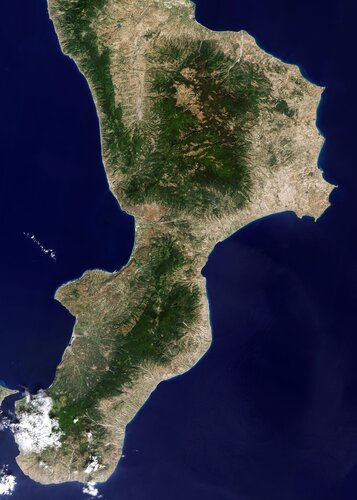
Calabria, often referred to as the ‘boot’ of Italy, is featured in this image captured by the Copernicus Sentinel-2 mission.
Open Maps For Europe project releases first datasets created from official, national geospatial data
24.9.2021 9:00 GISCafe.com Webcasts-Webinars Users can now access the first free-to-use maps via the Open Maps For Europe online gateway at https://www.mapsforeurope.org/Four open …
BlackSky Hires Business Development Leader as Chief Revenue Officer
24.9.2021 9:00 GISCafe.com Webcasts-Webinars J.R. Riordan to Lead New Business at Geospatial Intelligence CompanyHERNDON, Va. — (BUSINESS WIRE) — September 20, 2021 …
Project Trident: Space-Based Coastal Bathymetry - Interview with Ross Smith, Program Manager, TCarta
24.9.2021 9:00 GISCafe.com Webcasts-WebinarsAUTO dodávka VW CADDY 1.6
24.9.2021 8:50 Zeměměřický úřadZeměměřický úřad nabízí nepotřebný majetek k odkupu. Jedná se o
AUTO dodávka VW CADDY 1.6
AUTO dodávka VW CADDY 1.6
24.9.2021 8:50 ČÚZK - předpisy a opatřeníZeměměřický úřad nabízí nepotřebný majetek k odkupu. Jedná se o
AUTO dodávka VW CADDY 1.6
AUTO dodávka VW CADDY 1.6
24.9.2021 8:50 ČÚZK /Urady/Zememericky-urad/Nabidka-majetku/AUTO-dodavka-VW-CADDY-1-6APGEO - Volby APG 2021
24.9.2021 2:00 Asociace podnikatelů v geomatice Součástí valné hromady 2021, která se uskuteční v úterý 5. října 2021 v Průhonicích, budou také volby do orgánů APG.Chytré zemědělství a lesnictví na Joint Conference 2021
23.9.2021 21:14 GeoBusinessPořadatelé zvou na další ročník JOINT CONFERENCE 2021, která v sobě zahrnuje 25. ročník konference Informačních systémů v zemědělství a lesnictví (ISAF), 14. ročník Geomatiky v projektech, 6. výroční konferenci asociace Plan4All a také konferenci Agriculture 4.0 Smart Farming and Climate. Vzhledem k nestálé celosvětové situaci zachovává konference i letos virtuální formát. Hlavní dny konference se uskuteční virtuálně ve středu 20. října a ve čtvrtek 21. října 2021. […]
The post Chytré zemědělství a lesnictví na Joint Conference 2021 appeared first on GeoBusiness.
Církevní mapy představují raně novověkou církevní správu
23.9.2021 20:57 GeoBusinessBěhem vytváření Akademického atlasu českých dějin, na němž spolupracovali odborníci z Historického ústavu Akademie věd České republiky se zaměstnanci a studenty z katedry mapování a kartografie (dnes katedra geomatiky) Fakulty stavební ČVUT, vyšla najevo komplexnost problematiky římskokatolické církevní správy v raném novověku, jež by si zasloužila zpracování v prostředí geografických informačních systémů. Bílé místo ve studiu církevně-správních dějin zaplnil Pavel Seemann […]
The post Církevní mapy představují raně novověkou církevní správu appeared first on GeoBusiness.
Pražská SPŠZ slaví 70 let a zve do školy
23.9.2021 20:48 ZeměměřičStřední průmyslová škola zeměměřická slaví 70 let od zahájení svého provozu. V pátek 1. října 2021 od 14 hod otevře pro prohlídku své prostory v Praze 9 – Hrdlořezích. Můžete posoudit historické i současné přístrojové vybavení školy, popovídat si a získat i almanach k sedmdesátému výročí školy. Ředitel školy Jan Staněk vás srdečně uvítá až do 17. hodiny. Při vstupu do […]
The post Pražská SPŠZ slaví 70 let a zve do školy appeared first on Zeměměřič.
Trimble MX50, ProPoint, bezpilotní mapování, to jsou témata pro GIS Express 2021
23.9.2021 20:42 GeoBusinessFirma Geotronics Praha i letos pořádá říjnový GIS Express. Organizátoři v pozvánce oznamují, že i letos se raději rozhodli pro virtuální formu. GIS Express 2021 tedy proběhne ve formátu tří prezentací, ve kterých budou představena tři témata: GPS pro GIS, mobilní mapování a bezpilotní mapování. Po každé prezentaci bude prostor pro diskuzi a výměnu poznatků a zkušeností. Registrovat zdarma na jednotlivé webináře […]
The post Trimble MX50, ProPoint, bezpilotní mapování, to jsou témata pro GIS Express 2021 appeared first on GeoBusiness.
AUSA 2021: Logos Technologies Unveils MicroKestrel Wide-Area Sensor for Tethered UAS
23.9.2021 19:47 GISCafe.com Webcasts-Webinars World’s smallest wide-area motion imagery (WAMI) system, MicroKestrel delivers persistent surveillance to a whole new group of military and …Belam and Cepton Establish Partnership to Enable Safety at High-traffic Railway Level Crossings
23.9.2021 19:47 GISCafe.com Webcasts-Webinars Partnership enables smart railway intersections using advanced lidar-based obstacle detection solutionsSAN JOSE, Calif. — (BUSINESS WIRE) …
Fortem DroneHunter Successfully Defeats Drone Threats in US Army Test
23.9.2021 19:47 GISCafe.com Webcasts-Webinars Test advances DroneHunter System closer to operational deployments for protection of people and infrastructurePLEASANT GROVE, Utah, Sept. 23, 2021 …
Why the old ways of working arent working any more
23.9.2021 19:08 Bentley SystemsPressCoverage
IT Pro Portal, UK&I
Read the articleHow digital twins are reimagining the future of transportation
23.9.2021 18:31 Bentley SystemsPressCoverage
PBC Today, UK&I
Read the articlePrincipal Towers foundations dodge the tracks at Liverpool Street
23.9.2021 18:02 Bentley SystemsPressCoverage
New Civil Engineer, UK&I
Read the articleTYPSA Group Becomes First Large Spanish Engineering Company to Receive ISO 19650 Certification
23.9.2021 17:29 Bentley SystemsPressCoverage
Daily CADCAM, India
Read the articleReimagining the future of infrastructure
23.9.2021 17:22 Bentley SystemsPressCoverage
Geospatial World, India
Read the articlerada/odborný rada – rozhodování o povolení vkladu v oddělení právních vztahů k nemovitostem Katastrá
23.9.2021 17:00 ČÚZK - předpisy a opatření Katastrální úřad pro Jihočeský kraj Katastrální pracoviště Jindřichův Hradecvypisuje výběrové řízení na místo
rada/odborný rada – rozhodování o povolení vkladu v oddělení právních vztahů k nemovitostem Katastrálního pracoviště Jindřichův Hradec (ID SM 30000179/30003803)
rada/odborný rada – rozhodování o povolení vkladu v oddělení právních vztahů k nemovitostem Katastrá
23.9.2021 17:00 ČÚZK /Urady/Katastralni-urady/Katastralni-urady/Katastralni-urad-pro-Jihocesky-kraj/Uredni-deska/Oznameni-a-jina-uredni-sdeleni/Volna-mista/DMS/rada-odborny-rada-–-rozhodovani-o-povoleni-vkl-(2)rada/odborný rada – rozhodování o povolení vkladu v oddělení právních vztahů k nemovitostem Katastrá
23.9.2021 17:00 ČÚZK - volná místa Katastrální úřad pro Jihočeský kraj Katastrální pracoviště Jindřichův Hradec vypisuje výběrové řízení na místo rada/odborný rada – rozhodování o povolení vkladu v oddělení právních vztahů k nemovitostem Katastrávrchní referent/rada – obnova katastrálního operátu v oddělení aktualizace KN Katastrálního pracoviš
23.9.2021 16:51 ČÚZK - předpisy a opatření Katastrální úřad pro Jihočeský kraj Katastrální pracoviště Strakonicevypisuje výběrové řízení na místo
vrchní referent/rada – obnova katastrálního operátu v oddělení aktualizace KN Katastrálního pracoviště Strakonice (ID SM 30000361/30087122)
vrchní referent/rada – obnova katastrálního operátu v oddělení aktualizace KN Katastrálního pracoviš
23.9.2021 16:51 ČÚZK - volná místa Katastrální úřad pro Jihočeský kraj Katastrální pracoviště Strakonice vypisuje výběrové řízení na místo vrchní referent/rada – obnova katastrálního operátu v oddělení aktualizace KN Katastrálního pracovišDigital transformation for energy water utilities and real estate
23.9.2021 15:15 Bentley SystemsPressCoverage
Geospatial World, India
Read the articleWe deliver solutions that complement existing technology footprint of our user
23.9.2021 14:59 Bentley SystemsPressCoverage
Construction Times, India
Read the articlerada/odborný rada – rozhodování o povolení vkladu v oddělení právních vztahů k nemovitostem Katastrá
23.9.2021 14:55 ČÚZK /Urady/Katastralni-urady/Katastralni-urady/Katastralni-urad-pro-Jihocesky-kraj/Uredni-deska/Oznameni-a-jina-uredni-sdeleni/Volna-mista/DMS/rada-odborny-rada-–-rozhodovani-o-povoleni-vkl-(1)rada/odborný rada – rozhodování o povolení vkladu v oddělení právních vztahů k nemovitostem Katastrá
23.9.2021 14:55 ČÚZK - předpisy a opatření Katastrální úřad pro Jihočeský kraj Katastrální pracoviště Strakonicevypisuje výběrové řízení na místo
rada/odborný rada – rozhodování o povolení vkladu v oddělení právních vztahů k nemovitostem Katastrálního pracoviště Strakonice (ID SM 30000280/30003904)
rada/odborný rada – rozhodování o povolení vkladu v oddělení právních vztahů k nemovitostem Katastrá
23.9.2021 14:55 ČÚZK - volná místa Katastrální úřad pro Jihočeský kraj Katastrální pracoviště Strakonice vypisuje výběrové řízení na místo rada/odborný rada – rozhodování o povolení vkladu v oddělení právních vztahů k nemovitostem KatastráOdborný referent / vrchní referent – správa dokumentace katastru v oddělení aktualizace a dokumentac
23.9.2021 14:16 ČÚZK - volná místa Katastrální úřad pro Zlínský kraj Katastrální pracoviště Valašské Klobouky vypisuje výběrové řízení na místo Odborný referent / vrchní referent – správa dokumentace katastru v oddělení aktualizace a dokumentacOdborný referent / vrchní referent – správa dokumentace katastru v oddělení aktualizace a dokumentac
23.9.2021 14:16 ČÚZK - předpisy a opatření Katastrální úřad pro Zlínský kraj Katastrální pracoviště Valašské Kloboukyvypisuje výběrové řízení na místo
Odborný referent / vrchní referent – správa dokumentace katastru v oddělení aktualizace a dokumentace KN Katastrálního pracoviště Valašské Klobouky
Odborný referent / vrchní referent – správa dokumentace katastru v oddělení aktualizace a dokumentac
23.9.2021 14:16 ČÚZK /Urady/Katastralni-urady/Katastralni-urady/Katastralni-urad-pro-Zlinsky-kraj/Uredni-deska/Oznameni-a-jina-uredni-sdeleni/Volna-mista/DMS/Odborny-referent-vrchni-referent-–-sprava-dokumeProgram konference Geomatika 2021
23.9.2021 12:24 ZeměměřičNa začátku října pořádá Asociace podnikatelů v geomatice svoji valnou hromadu. Po valné hromadě, určené pouze členům, se můžete zúčastnit konference, nazvané Geomatika 2021. 14:00 – 14:20 – Zahájení: Ing. Martin Hrdlička (APG) 14:20 – 14:40 – DTM a samospráva: Ing. Martin Kupka (PS PČR) 14:40 – 15:00 – Hlavní principy zakotvené v právních předpisech DMVS: Ing. Karel Štencel (ČÚZK) […]
The post Program konference Geomatika 2021 appeared first on Zeměměřič.
Zákonná komora zeměměřičů v programu konference Geomatika 21
23.9.2021 12:24 ZeměměřičNa začátku října pořádá Asociace podnikatelů v geomatice svoji valnou hromadu. Po valné hromadě, určené pouze členům, se můžete zúčastnit konference, nazvané Geomatika 21. 14:00 – 14:20 – Zahájení: Ing. Martin Hrdlička (APG) 14:20 – 14:40 – DTM a samospráva: Ing. Martin Kupka (PS PČR) 14:40 – 15:00 – Hlavní principy zakotvené v právních předpisech DMVS: Ing. Karel Štencel (ČÚZK) […]
The post Zákonná komora zeměměřičů v programu konference Geomatika 21 appeared first on Zeměměřič.
Webinář - 3D mapování podzemních prostor: od skenování po finální produkt
23.9.2021 12:20 3gon Záznam z webináře Mapování podzemních prostor pomocí 3D skenování (statického a mobilního) - klikni.Ukážeme si jak jednoduše lze skenovat a následně jak udělat požadovaný výstup a to například 3D model, objem, profily a řezy atd. Když se ví jak na to, nic není nemožné a obtížné. My to víme :) Budeme si hrát se skenery GeoSLAM atd. a zpracovávat data v softwarech GeoSLAM HUB a Carlson Point Cloud od společnosti Carlson Software, Inc., kde vytvoříme prostorový model podzemí s jeho následnou editací, výpočtem objemů, vytvářením profilů a příčných řezů a bude zodpovězena problematika, jak vytvořená data využít v dalších profesích a návazných softwarových aplikacích.
Vybrané otázky věcných práv budou jedním z témat 26. semináře Katastr nemovitostí
23.9.2021 12:11 ZeměměřičSpolek zeměměřičů Brno zve na svůj 26. seminář o katastru nemovitostí. Akce se uskuteční 14. října 2021 v Třebíči v hotelu Atom. 8:00 – 9:00 Prezence účastníků 9:00 – 14:00 Seminář a diskuse Přednášející Mgr. Michal Králík, Ph.D. (Nejvyšší soud České republiky): Vybrané otázky věcných práv v občanském zákoníku z pohledu aktuální judikatury Nejvyššího soudu ČR Ing. Bc. Vladimíra Žufanová, Ph.D. (Český […]
The post Vybrané otázky věcných práv budou jedním z témat 26. semináře Katastr nemovitostí appeared first on Zeměměřič.
Vybrané otázky věcných práv jedním z témat 26. semináře Katastr nemovitostí
23.9.2021 12:11 ZeměměřičSpolek zeměměřičů Brno zve na svůj 26. seminář o katastru nemovitostí. Akce se uskuteční 14. října 2021 v Třebíči v hotelu Atom. 8:00 – 9:00 Prezence účastníků 9:00 – 14:00 Seminář a diskuse Přednášející Mgr. Michal Králík, Ph.D. (Nejvyšší soud České republiky): Vybrané otázky věcných práv v občanském zákoníku z pohledu aktuální judikatury Nejvyššího soudu ČR Ing. Bc. Vladimíra Žufanová, Ph.D. (Český […]
The post Vybrané otázky věcných práv jedním z témat 26. semináře Katastr nemovitostí appeared first on Zeměměřič.
Odborný referent v oddělení právních vztahů k nemovitostem Katastrálního pracoviště Rychnov nad Kněž
23.9.2021 9:22 ČÚZK - předpisy a opatření Katastrální úřad pro Královéhradecký kraj - Katastrální pracoviště Rychnov nad Kněžnouvypisuje výběrové řízení na místo
Odborný referent v oddělení právních vztahů k nemovitostem Katastrálního pracoviště Rychnov nad Kněžnou
Odborný referent v oddělení právních vztahů k nemovitostem Katastrálního pracoviště Rychnov nad Kněž
23.9.2021 9:22 ČÚZK - volná místa Katastrální úřad pro Královéhradecký kraj - Katastrální pracoviště Rychnov nad Kněžnou vypisuje výběrové řízení na místo Odborný referent v oddělení právních vztahů k nemovitostem Katastrálního pracoviště Rychnov nad KněžOdborný referent v oddělení právních vztahů k nemovitostem Katastrálního pracoviště Rychnov nad Kněž
23.9.2021 9:22 ČÚZK /Urady/Katastralni-urady/Katastralni-urady/Katastralni-urad-pro-Kralovehradecky-kraj/Volna-mista/Odborny-referent-v-oddeleni-pravnich-vztahu-k-nemoGeodet/ka
23.9.2021 8:21 ČÚZK /Urady/Zememericky-urad/Uredni-deska/Oznameni-a-jina-uredni-sdeleni/Volna-mista/Geodet-ka-(1)Geodet/ka
23.9.2021 8:21 ČÚZK - volná místa Zeměměřický úřad vypisuje výběrové řízení na místo Geodet/kaGeodet/ka
23.9.2021 8:21 ČÚZK - předpisy a opatření Zeměměřický úřadvypisuje výběrové řízení na místo
Geodet/ka
Geodet/ka
23.9.2021 8:21 Zeměměřický úřad Zeměměřický úřadvypisuje výběrové řízení na místo
Geodet/ka
FEMA Awards Geospark Analytics New Contract for Community Lifeline Interdependency Analysis
22.9.2021 23:33 GISCafe.com Webcasts-Webinars HERNDON, Va., Sept. 22, 2021 — (PRNewswire) — Geospark Analytics, a world class leader in applied artificial intelligence …Seminář Katastr nemovitostí XXVI., 2021
22.9.2021 21:43 Spolek zeměměřičů Brno Dne 14. října 2021 se uskutečnil seminář o katastru nemovitostí.Kde: Hotel Atom, Velkomeziříčská 640/45, Třebíč Program 8:00 – 9:00 Prezence účastníků9:00 – 14:00 Seminář a diskuse Přednášející Mgr. Michal Králík, Ph.D. (Nejvyšší soud České republiky)Vybrané otázky věcných práv v občanském zákoníku z pohledu aktuální judikatury Nejvyššího soudu ČR Ing. Bc. Vladimíra... Read more »Seminář Katastr nemovitostí XXVI., 2021
22.9.2021 21:43 Spolek zeměměřičů Brno Dne 14. října 2021 se uskuteční seminář o katastru nemovitostí.Kde: Hotel Atom, Velkomeziříčská 640/45, Třebíč Program 8:00 – 9:00 Prezence účastníků9:00 – 14:00 Seminář a diskuse Přednášející Mgr. Michal Králík, Ph.D. (Nejvyšší soud České republiky)Vybrané otázky věcných práv v občanském zákoníku z pohledu aktuální judikatury Nejvyššího soudu ČR Ing. Bc. Vladimíra... Read more »Vexcel Data Program Enhances Wide Area Capture Program in U.S. and Europe
22.9.2021 20:05 GISCafe.com Webcasts-Webinars BOULDER, Colo., Sept. 22, 2021 — (PRNewswire) — Vexcel Data Program announced today it will enhance its entire Wide Area …Data Science Helps Raleigh Water Avoid Digging Up The Streets
22.9.2021 18:21 GISCafe.com Webcasts-Webinars Xylem & Esri Partner to Analyze Risk on 88,000 Pipe Segments And Reduce Planning Time by 75%RYE BROOK, N.Y. — (BUSINESS WIRE) — …
Press Release - Enhanced User Experience with New Online Map Service
22.9.2021 16:28 GISCafe.com Webcasts-Webinars Enhanced User Experience with New Online Map ServiceCLERMONT-FERRAND, France – September 21, 2021 – PlanetObserver and Kalisio reveal …
Guidebook on Airport Response to UAS Threats, Developed by Woolpert, Published by National Safe Skies Alliance
22.9.2021 16:25 GISCafe.com Webcasts-Webinars The information is designed to help airports develop planning, response and recovery protocols.DENVER, Sept. 22, 2021 — (PRNewswire) — …
Draganfly Selected as Exclusive Manufacturer for Valqari Drone Delivery Stations and Receives Initial $400,000 Order
22.9.2021 16:23 GISCafe.com Webcasts-Webinars Los Angeles, CA., Sept. 22, 2021 (GLOBE NEWSWIRE) -- Draganfly Inc. (NASDAQ: DPRO) (CSE: DPRO) (FSE: 3U8) (“Draganfly” or the “Company”), …Matternet and SkyGo partner with Abu Dhabi DoH for world's first city-wide medical drone network
22.9.2021 16:23 GISCafe.com Webcasts-Webinars Advanced aerial delivery network positions the Emirate on the leading-edge of healthcare and last-mile logisticsABU DHABI, UAE, Sept. 22, 2021 …
20210922_Odborný referent oddělení právních vztahů k nemovitostem
22.9.2021 14:12 ČÚZK - předpisy a opatření Katastrální úřad pro Středočeský kraj - Katastrální pracoviště Kutná Hora Vyhlášení výběrového řízení: odborný referent oddělení právních vztahů k nemovitostem V části "Úřední deska", v sekci "Oznámení a jiná úřední sdělení" bylo vystaveno "Oznámení o vyhlášení výběrového řízení na obsazení služebního místa odborný referent oddělení právních vztahů k nemovitostem"20210922_Odborný referent oddělení právních vztahů k nemovitostem
22.9.2021 14:12 ČÚZK /Urady/Katastralni-urady/Katastralni-urady/Katastralni-urad-pro-Stredocesky-kraj/Katastralni-pracoviste/KP-Kutna-Hora/O-uradu/Aktuality/20210922_Odborny-referent-oddeleni-pravnich-vztahuOdborný referent oddělení právních vztahů k nemovitostem
22.9.2021 14:09 ČÚZK - volná místa Katastrální úřad pro Středočeský kraj - Katastrální pracoviště Kutná Hora vypisuje výběrové řízení na místo Odborný referent oddělení právních vztahů k nemovitostemOdborný referent oddělení právních vztahů k nemovitostem
22.9.2021 14:09 ČÚZK - předpisy a opatření Katastrální úřad pro Středočeský kraj - Katastrální pracoviště Kutná Horavypisuje výběrové řízení na místo Odborný referent oddělení právních vztahů k nemovitostem
Odborný referent oddělení právních vztahů k nemovitostem
20210922_Odborný referent oddělení aktualizace PI KN I.
22.9.2021 13:59 ČÚZK - předpisy a opatření Katastrální úřad pro Středočeský kraj - Katastrální pracoviště Praha-západ Vyhlášení výběrového řízení: odborný referent oddělení aktualizace PI KN I. V části "Úřední deska", v sekci "Oznámení a jiná úřední sdělení" bylo vystaveno "Oznámení o vyhlášení výběrového řízení na obsazení služebního místa odborný referent oddělení aktualizace PI KN I. "20210922_Odborný referent oddělení aktualizace PI KN I.
22.9.2021 13:59 ČÚZK /Urady/Katastralni-urady/Katastralni-urady/Katastralni-urad-pro-Stredocesky-kraj/Katastralni-pracoviste/KP-Praha-zapad/O-uradu/Aktuality/20210922_Odborny-referent-oddeleni-aktualizace-PIOdborný referent oddělení aktualizace PI KN I.
22.9.2021 13:55 ČÚZK - předpisy a opatření Katastrální úřad pro Středočeský kraj - Katastrální pracoviště Praha-západvypisuje výběrové řízení na místo odborný referent oddělení aktualizace PI KN I.
Odborný referent oddělení aktualizace PI KN I.
REFERENT MAJETKOVÉ SPRÁVY
22.9.2021 11:49 ČÚZK - volná místa Katastrální úřad pro hlavní město Prahu vypisuje výběrové řízení na místo REFERENT MAJETKOVÉ SPRÁVYreferent majetkové správy
22.9.2021 11:49 ČÚZK /Urady/Katastralni-urady/Katastralni-urady/Katastralni-urad-pro-hlavni-mesto-Prahu/Volna-mista/DMS/REFERENT-MAJETKOVE-SPRAVYreferent majetkové správy
22.9.2021 11:49 ČÚZK - volná místa Katastrální úřad pro hlavní město Prahu vypisuje výběrové řízení na místo referent majetkové správyreferent majetkové správy
22.9.2021 11:49 ČÚZK - předpisy a opatření Katastrální úřad pro hlavní město Prahuvypisuje výběrové řízení na místo
referent majetkové správy
New infrastructure in Kerguelen island, key for the continued Galileo Service Provision
22.9.2021 11:07 European GNSS Agency
The construction of a new Galileo Sensor Station in the Kerguelen Islands, in the French Southern and Antarctic Lands (TAAF), was recently completed. The installation of the infrastructure has now begun and will be followed by integration and testing of the GSS apparatuses, which will continue until May 2022 to ensure its robust functioning in view of the forthcoming Galileo satellites launches.
To make the best use of the Galileo services, users rely on much more than the satellites orbiting the earth at an altitude of 23.000km. Dedicated facilities such as the Galileo Control Centers (GCCs), the sensor and uplink stations are some of the most important components that make up the so-called ‘’Galileo Ground Segment’’ the role of which is to support the service provision of Europe’s own Global Navigation Satellite System.
The Galileo Sensor Stations (GSS) are a network of antennas deployed at remote sites located around the world for real-time monitoring of the signal precision and quality, as well as establishing the satellite orbits with precision.
A new infrastructure was recently built in the Kerguelen Islands to host the newest, state-of-the art GSS. The new station will replace the previous one, built in the earliest stages of the programme, as part of an update of the world-wide network of the Galileo Ground Segment. These upgrades will further increase the performance of the European navigation and positioning system and guarantee an accurate, precise signal at all times across the globe.

A remote EU location of significant importance.
Situated in the sub-Antarctic region of the Indian Ocean, with a population of about 150 scientists, researchers and soldiers, the Kerguelen Islands are among the world’s most isolated places, 3500 km away from the Reunion island. Under French jurisdiction, these volcanic islands are part of Europe.
"Placing the GSS in the Kerguelen islands is of major importance. Galileo is the EU’s largest and most ambitious industrial project - maintaining its integrity and performance is of utmost importance for Europe and its citizens. This is a perfect location for both operational and security reasons" says Executive Director, Rodrigo da Costa.
Putting together the infrastructure was not easy due to the weather conditions and the island’s remote location. It is reached only four times a year by “Marion Dufresne”, a vessel departing from La Réunion, and anchoring off the Kerguelen Islands only after 15 days of sailing. The new GSS worth 2 million euros is fully funded by the European Union and is set to undergo tests until May 2022 to ensure its robust functioning in view of the forthcoming Galileo satellites launches.
Media note: This feature can be republished without charge provided the European Union Agency for the Space Programme (EUSPA) is acknowledged as the source at the top or the bottom of the story. You must request permission before you use any of the photographs on the site. If you republish, we would be grateful if you could link back to the EUSPA website (http://www.euspa.europa.eu).
New infrastructure in Kerguelen Islands, key for the continued Galileo Service Provision
22.9.2021 11:07 European GNSS Agency
The construction of a new Galileo Sensor Station in the Kerguelen Islands, in the French Southern and Antarctic Lands (TAAF), was recently completed. The installation of the infrastructure has now begun and will be followed by integration and testing of the GSS apparatuses, which will continue until May 2022 to ensure its robust functioning in view of the forthcoming Galileo satellites launches.
To make the best use of the Galileo services, users rely on much more than the satellites orbiting the Earth at an altitude of 23.000km. Dedicated facilities such as the Galileo Control Centers (GCCs), sensor and uplink stations are some of the most important components that make up the so-called ‘’Galileo Ground Segment’’ the role of which is to support the service provision of Europe’s own Global Navigation Satellite System.
The Galileo Sensor Stations (GSS) are a network of antennas deployed at remote sites located around the world for real-time monitoring of the signal precision and quality, as well as establishing the satellite orbits with precision.
A new infrastructure was recently built in the Kerguelen Islands to host the newest, state-of-the art GSS. The new station will replace the previous one, built in the earliest stages of the programme, as part of an update of the world-wide network of the Galileo Ground Segment. These upgrades will further increase the performance of the European navigation and positioning system and guarantee an accurate, precise signal at all times across the globe.

A remote EU location of significant importance.
Situated in the sub-Antarctic region of the Indian Ocean, with a population of about 150 scientists, researchers and soldiers, the Kerguelen Islands are among the world’s most isolated places, 3500 km away from the Reunion Island. Under French jurisdiction, these volcanic islands are part of Europe.
"Placing the GSS in the Kerguelen islands is of major importance. Galileo is the EU’s largest and most ambitious industrial project - maintaining its integrity and performance is of utmost importance for Europe and its citizens. This is a perfect location for both operational and security reasons" says Executive Director, Rodrigo da Costa.
Putting together the infrastructure was not easy due to the weather conditions and the island’s remote location. It is reached only four times a year by “Marion Dufresne”, a vessel departing from La Réunion, and anchoring off the Kerguelen Islands only after 15 days of sailing. The new GSS of 2 million euros worth is fully funded by the European Union and is set to undergo tests until May 2022 to ensure its robust functioning in view of the forthcoming Galileo satellites launches.
Media note: This feature can be republished without charge provided the European Union Agency for the Space Programme (EUSPA) is acknowledged as the source at the top or the bottom of the story. You must request permission before you use any of the photographs on the site. If you republish, we would be grateful if you could link back to the EUSPA website (http://www.euspa.europa.eu).
Pozvánka na Joint conference 2021
22.9.2021 10:55 Blogující geomatici - FAV ZČURádi bychom pozvali všechny zájemce a nadšence o geomatiku a geoprostorová data na letošní ročník JOINT CONFERENCE 2021. Ta v sobě zahrnuje 25. ročník konference Informačních systémů v zemědělství a lesnictví (ISAF), 14. ročník Geomatiky v projektech, 6. výroční konferenci asociace Plan4All a také konferenci Agriculture 4.0 smart farming and climate.
Pro letošní rok vzhledem ke stále nestálé celosvětové situaci zachovává konference virtuální formát. Hlavní dny konference se uskuteční virtuálně ve středu 20. října a ve čtvrtek 21. října 2021. Konference je pro registrované zdarma.
Registrace účastníků a konferenčních příspěvků je k dispozici jednotně na odkaze: https://forms.gle/UnVMM2dJHyREDpSXA.
Příspěvky mohou být libovolného konferenčním tématu a postačí pro jejich registraci abstrakt. Členové programového výboru mohou po konferenci oslovit autory vybraných příspěvků s možností publikace rozšířených verzí příspěvků v online časopisu Agris online.
Pozvánka na webinář ArcGIS v prostředí webu
22.9.2021 10:54 Blogující geomatici - FAV ZČUBěhem webináře se zaměříme na práci s nejpoužívanějšími aplikacemi ArcGIS:
ArcGIS Pro, ArcGIS Online, ArcGIS Field Maps, ArcGIS Survey123, ArcGIS Insights a ArcGIS StoryMaps.
V rámci jednotlivých ukázek přitom projdeme všechny důležité fáze práce v GIS, kterými jsou:
- sběr geodat,
- analýza geodat,
- tvorba interaktivní mapy,
- a prezentace výsledků pomocí webové aplikace obsahující interaktivní mapu spolu s dalšími informačními zdroji.
Povíme si i o správě uživatelů prostřednictvím portálu, díky kterému se všechny tyto procesy mohou odehrávat nad jediným úložištěm dat (na serveru nebo v cloudu). Každý uživatel tak data využívá:
- odkudkoli (tedy distančně),
- podle svých oprávnění (tedy bezpečně),
- z jakéhokoli zařízení (PC, mobil, tablet),
- z webu či prostřednictvím nainstalované aplikace.
Díky portálu je navíc možná spolupráce (sdílené využívání geodat) v rámci organizace i mezi organizacemi navzájem.
Forma webináře: online v Google meet (meet.google.com/wsd-vzom-dxy)
Termín webináře: 4. 10. 2021 v čase 11:10 – 13:40
Přednášející: Radek Kuttelwascher, ARCDATA PRAHA, s.r.o.
Úroveň webináře: Seminář je koncipován pro uživatele ArcGIS různé pokročilosti (pedagogy i studenty).
Dotazy v chatu či ústně předem i během webináře jsou vítány.
JOINT CONFERENCE 2021 (pozvánka)
22.9.2021 9:51 GISportal.cz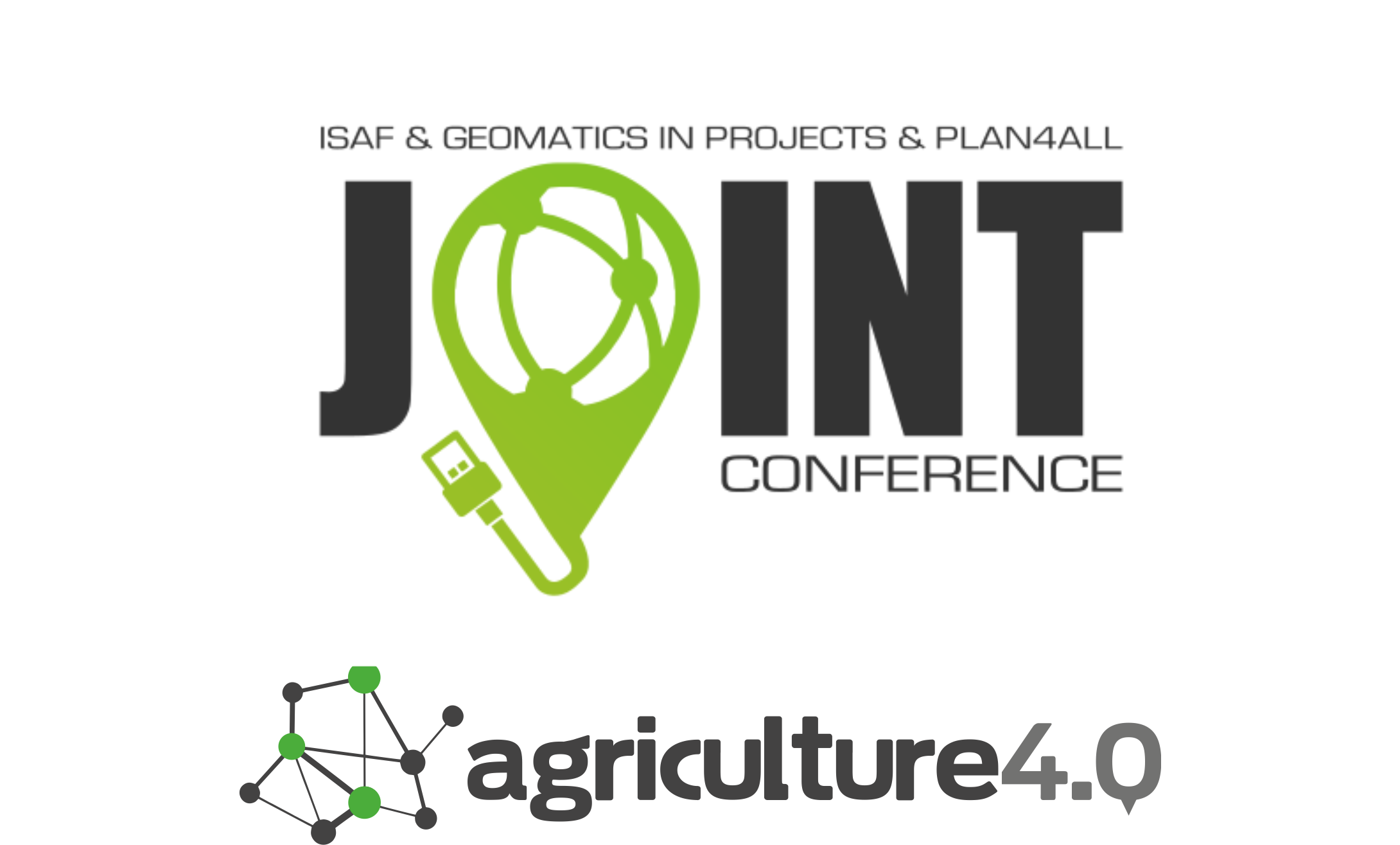
Rádi bychom pozvali všechny zájemce a nadšence o geomatiku a geoprostorová data na letošní ročník JOINT CONFERENCE 2021. Ta v sobě zahrnuje 25. ročník konference Informačních systémů v zemědělství a lesnictví (ISAF), 14. ročník Geomatiky v projektech, 6. výroční konferenci asociace Plan4All a také konferenci Agriculture 4.0 smart farming and climate. Pro letošní rok vzhledem ke stále […]
The post JOINT CONFERENCE 2021 (pozvánka) appeared first on GISportal.cz.




